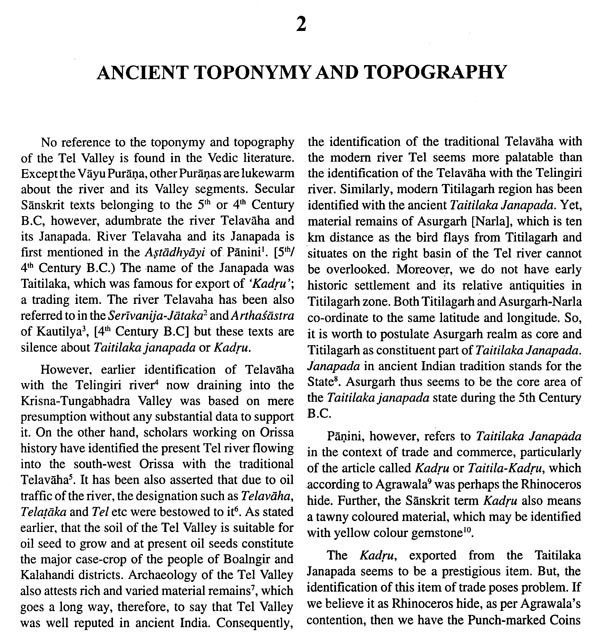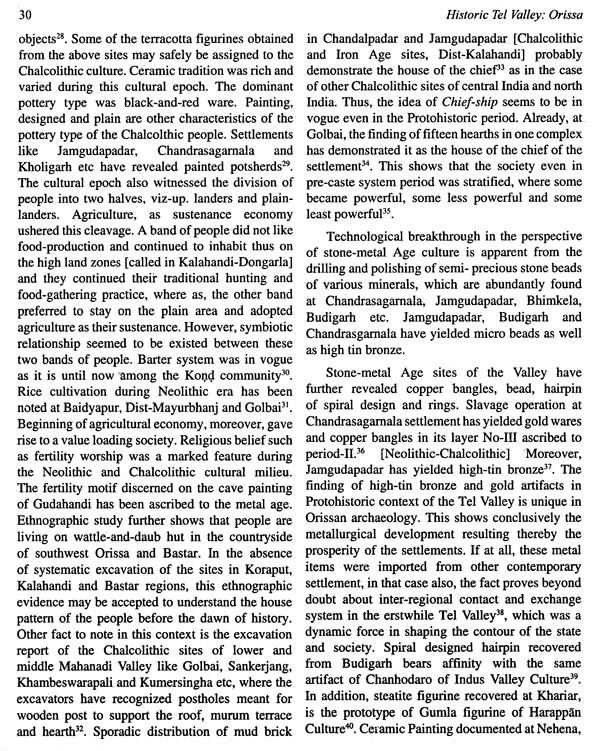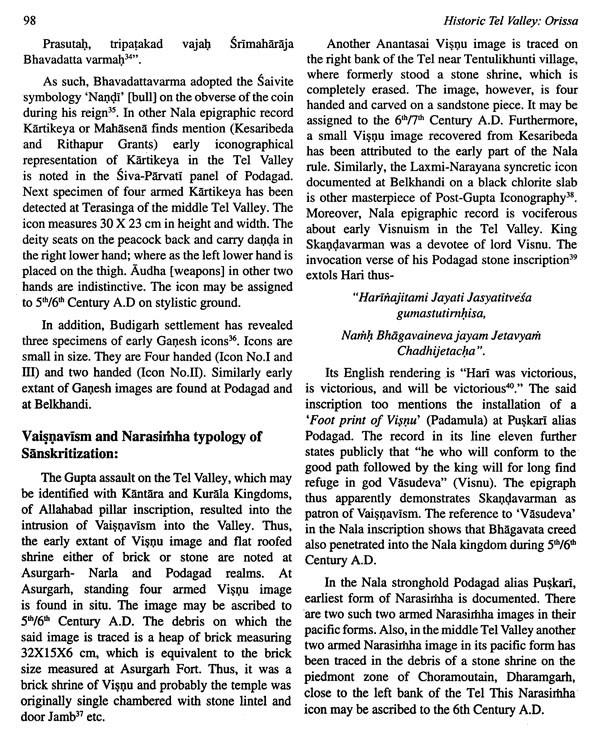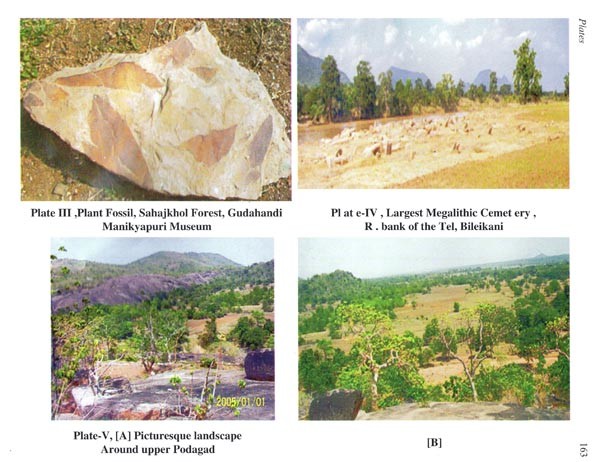
Early Historical Tel Valley, Orissa (From C.600 B.C. to C.600 A.D.)
Book Specification
| Item Code: | AZE643 |
| Author: | Baba Mishra |
| Publisher: | B.R. PUBLISHING CORPORATION |
| Language: | ENGLISH |
| Edition: | 2013 |
| ISBN: | 9789350500804 |
| Pages: | 188 (Throughout Color Illustrations with Maps) |
| Cover: | HARDCOVER |
| Other Details | 11.00x9.00 |
| Weight | 700 gm |
Book Description
The present project is a sub-regional study. It is a fact that small cultural bits of different sub-regions of the sub-continent had built the spectrum of Indian culture in the past. In this context, the attempt to understand the early history of the Tel river Valley of south-west Orissa carrics significance. It is an inter disciplinary study to find out the hidden past of the concerned landmass at least from circa. 600 BC up to circa 600 A.D. The arguments put forth in the investigation are mainly based on primary sources.
The research is divided into seven chapters. Introduction deals on the problem, physical setting of the Tel Valley and the sources, viz. archaeology, numismatics, epigraphs, and literatures. It is followed by the chapter, the identification of ancient toponymy and topography of the Valley after converging the literary and archaeological data together. Chapter-III discusses the political history. Emphasis is being made to study the dynamism of state formations, early ruling dynasties and justification of the Kingdom [Mahakantāra) as State on the basis of the Saptanga theory, which may be called Indian Historical Model. Chapter-IV highlights the urbanization process keeping in view of the pan-Indian level and the said chapter deals on the urban boom of at least ten archaeological sites situated in the upper, middle and lower Valley of the Tel. The evolution of script and language during historical time is a milestone in human civilization. Attempt is made to identify the graffiti/sign and motif of stone-metal age which are traded on the potsherds and cave arts of the Valley with alphabet. The early script and language understood in the landmass were bilingual script such as Kharosthi-Brahmi and Prakrit which prevailed during the 1st and 2nd centuries A.D. Sanskrit language with box-headed and angular script is traced during the 5th-6th centuries A.D. While the Chapter VI primarily concerns about prevailing religion, brahmanization, social condition, impact of brahmanization on the society and art convention of the region, Chapter VII draws the conclusion of the research.
Thus, I must record my thanks to the Indian Council of Historical Research, New Delhi, for financial grant to carry on this research project. To the staff members of Bhubaneswar State Museum, Bhubaneswar, N.K. Sahu Museum, Sambalpur Jniversity and Manikyapuri Museum, Bhawanipatna, I register my thanks for their co-operation while analyzing the preserved artifacts.
In political, economic and cultural spheres, imperial powers like the Maurya, Kushana and Gupta played remarkable role during the third Century BC to fourth Century A.D. Under the aegis of these dynasties, political unity and cultural integrity of India was achieved. Communication system was improved. Kingdoms were connected by highways and roads. A uniform standard of weight and measurement prevailed in the sub- continent. This facilitated brisk trade and commerce through which ideas were transmitted from one part of the country to another. State formation and urbanization were in full swing throughout India at that time. Moreover, congenial eco-system.
the sub-continent during the periods from at least 500 BC to 500 AD. Expansion of agriculture by converting fallow land into agricultural patch, migration and settlement of people at the source of agriculture, and development of canal irrigation etc. resulted in surplus yield that brought into existence ranked society and other social complexity. Control over water through canal irrigation ushered a period of hydraulic despotism in polity. In ideological sphere, the role of Parivrajakas and Sramanas to spread the gospel of "Buddha, Mahavira and Vedic culture in the hinterlands and far off regions of India as well as foreign countries was in vouge. Art and architecture, language and literature thrived and became the vehicle of expression of the philosophy. idea and ethics etc that shaped the personality of human being in the then India, resulting thereby spurt of creativity in every field. Absence of foreign invasion and internal stability during the heyday of the Mauryas and the Gupta rule further facilitated all round development of India. The Kushanas although alien to Indians, ultimately were assimilated with Indian society and culture. The great Kushana king Kanishka, espoused the cause of Indian Culture. In the domain of science and technology remarkable escalation took place and India carved a distinctive nitch in the intellectual edifice of the world.
All these optimistic conditions shaped the foundation of Indian civilization and culture during the periods ranging from the 6th Century BC to them 6th Century AD.
**Contents and Sample Pages**













